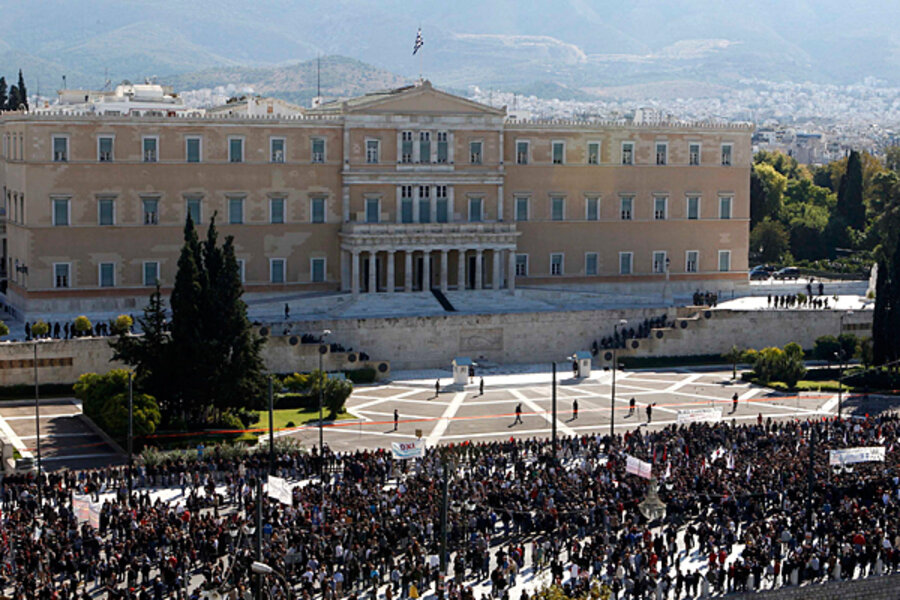July 2011: A second bailout package for Greece of $157 billion in loans is approved. The deal includes a cut in interest rates Greece has to pay and an extension of the maturity period for Greek bonds, but requires continued austerity.
September 2011: The Greek parliament agrees to new, unpopular property taxes and begins discussing additional austerity measures. Both are necessary to continue receiving bailout funds, but wildly unpopular in Greece.
October 2011: A nationwide strike begins Oct. 19, alongside protests in Athens. Both are pegged to an Oct. 20 parliamentary vote on cutting public sector jobs, decreasing public sector wages, decreasing pensions for high-income earners, scaling back collective bargaining rights, and imposing new taxes, according to the Wall Street Journal. The government hopes that approving the new measures will convince international creditors, who will meet on Oct. 23, to release another round of much-needed funding for Greece. Without the $11 billion tranche, the Greek government says it will run out of money by November.





